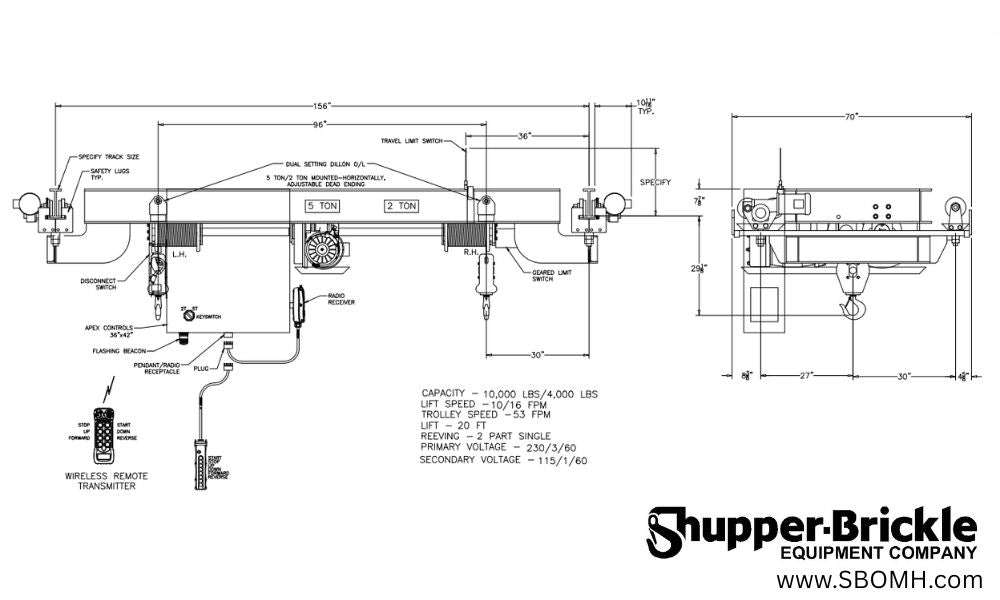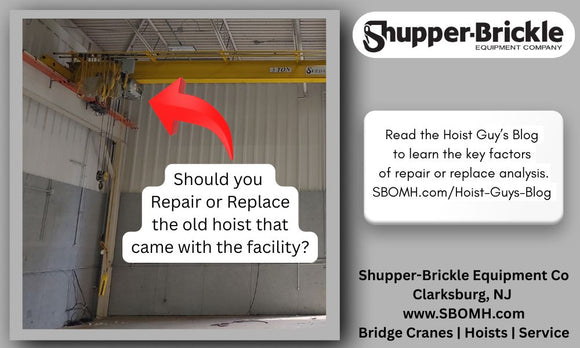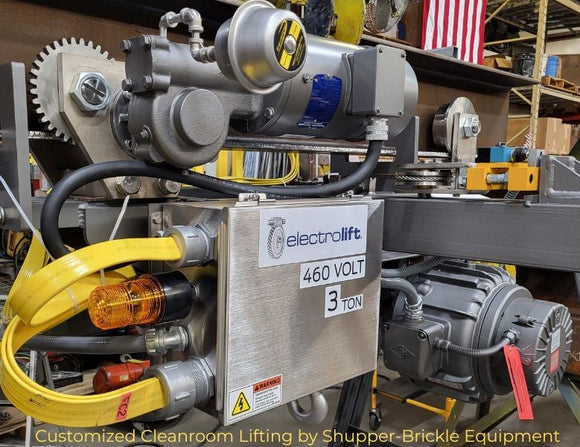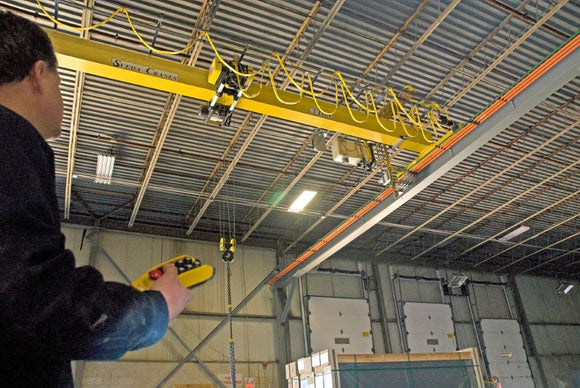
The Combination Hoist - An Engineered Solution for Budget Maximization
Andrew T. Litecky
Welcome to the Hoist Guy's blog, where our resident Hoist Guy, Andrew T. Litecky, shares his industry knowledge and discusses special applications. In this case study, we review how one custom-engineered hoist resolved two lifting problems.
Case Study: A One Hoist Solution for Two Lifting Tasks
A customer came to us with a problem: How could the budget for one new hoist stretch to cover two replacement hoists without sacrificing productivity?
In their daily manufacturing of a high-demand product, the customer was using a 50-year-old 2-ton twin hook wire rope hoist for material roll handling, and on the same 80-foot patented track runway, a 50-year-old, 5-ton wire rope hoist for maintenance of engraving rolls within the web process. Keeping the two hoists running had become more difficult due to a lack of parts after the hoist manufacturer closed their plant. Both hoists were integral to the operation, but budgetary constraints prevented the customer from replacing both the 2-ton production hoist and the 5-ton maintenance hoist.
A Cost-Effective Design for both Production Use and Maintenance Use
As a cost-effective solution, we suggested a “combo hoist” or one unit that could do the work of both the 2-ton hoist for everyday production and the 5-ton hoist maintenance work. This special design required an overload device with two settings, and a key switch that set the mode of use: 2-ton capacity for production and 5-ton capacity during shutdowns for engraving roll changing.
To operate the system, variable frequency drives controlled the hoist and the trolley speeds. For regular production, the drives were set at the highest top speed for operators to move product as quickly as possible. However, during maintenance outages, the maintenance crew turned the key switch to “5-Ton” to control the movement of the hook to a slower, more manageable top speed or to the lowest speed for removing and replacing engraving rolls.
This combination twin hook hoist was made in the USA by Electrolift of Clifton, NJ. Its controls were engineered and built by Apex Controls of Sebring, Ohio.
Before the hoist shipped to the customer, it was brought into Shupper-Brickle’s shop in Clarksburg, NJ for commissioning, a process that prepared the unit for turn-key installation. In our shop test area, all hoist features were exercised on two patented track rails. A representative of Apex set the VFD’s and performed a test run of both the hoist and trolley.
When VFD programming was complete, the dual overloads were tested at 125% of the 2-ton side of the hoist, and with a flip of the key switch, 125% of the 5-ton side of the hoist. The extra step of commissioning ensured the hoist was ready for immediate production use.
The Keys To Success for this Customized System
The keys to success for this design included:
- 1. Both capacities had the same headroom, after the 5-Ton side was engineered with a modified profile between the runways.
- 2. Two speeds were implemented through the use of a PLC. The production hoisting speed of the 2-ton unit was 16-18 fpm and the maintenance hoisting speed of the 5-ton capacity hoist was about 10-12 fpm.
- 3. By using high-quality, USA-made equipment, this system was designed to last another fifty years.
After ensuring the hoist was fully tested, it’s installation was turn-key. The customer now has a new twin hook hoist, to keep up with their production demands as well as provide maintenance functionality as needed.
Customized Lifting Solutions for Special Applications
Shupper-Brickle Equipment has provided overhead material handling since 1969, including engineered solutions to solve lifting challenges. Contact us for assistance with your lifting application.


